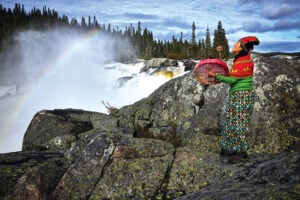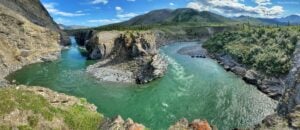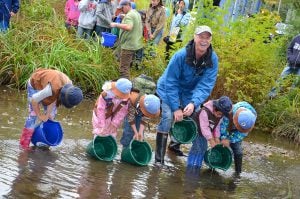“You look like you’ve got been-on-a-plane-too-long syndrome,” says guide Trey Barnett when I arrive at Wildwater Rafting, just outside Bryson City, in western North Carolina, after nearly 12 hours of travel from Ottawa. “Let’s get you out on the river.”
And in a matter of minutes, we are. The river is the Nantahala (Cherokee for “land of the noonday sun”), the flow of which is controlled by a dam, meaning the water level is pretty consistent. But this doesn’t mean the Nantahala is a meek river. Oh no. The eight-mile stretch Barnett leads us down in inflatable kayaks called duckies contains Class 3 rapids, which are thrilling enough for a paddling novice like me and challenging enough for the more seasoned kayakers we see surfing, spinning and splashing through the rapids that regularly punctuate this portion of the river.
Between shooting rapids, we drift and paddle under bridges, alongside the track that takes the recently refurbished Great Smoky Mountains Railroad up the Nantahala Gorge, and through a canopy of sycamores, white birch and other greenery so lush that you’d be forgiven for thinking you were in a subtropical rainforest.
Barnett, an affable and clearly knowledgeable guide, peppers the journey with stories about the area. Over on that bank, the old highway, which long before it was a highway was what came to be known as the Trail of Tears, the route along which thousands of Cherokee were forcibly removed from their lands and marched west by the U.S. Army in 1838. There, just past that footbridge, the gorgeous bloom of white rhododendrons hanging low over an eddy in the water. Around that bend, a quarry — “I like to say there used to be a mountain there but they took it for granite,” jokes Barnett — which operates under “pretty strict” Environmental Protection Agency guidelines and doesn’t spoil the river’s charm or seem to put too much of a crimp in Wildwater’s low-impact, eco-tourism ethos.
“So what do you think?” says Barnett, after we shoot through a rapid with the well-earned name The Bump. “You ready to quit your job and come down here and be a rafting guide?”
I wipe the water from my eyes, look back upstream at the roiling water and sunlight slanting through the trees, and laugh, all the tiredness forgotten. “Yeah, what the hell. I think I will.”





